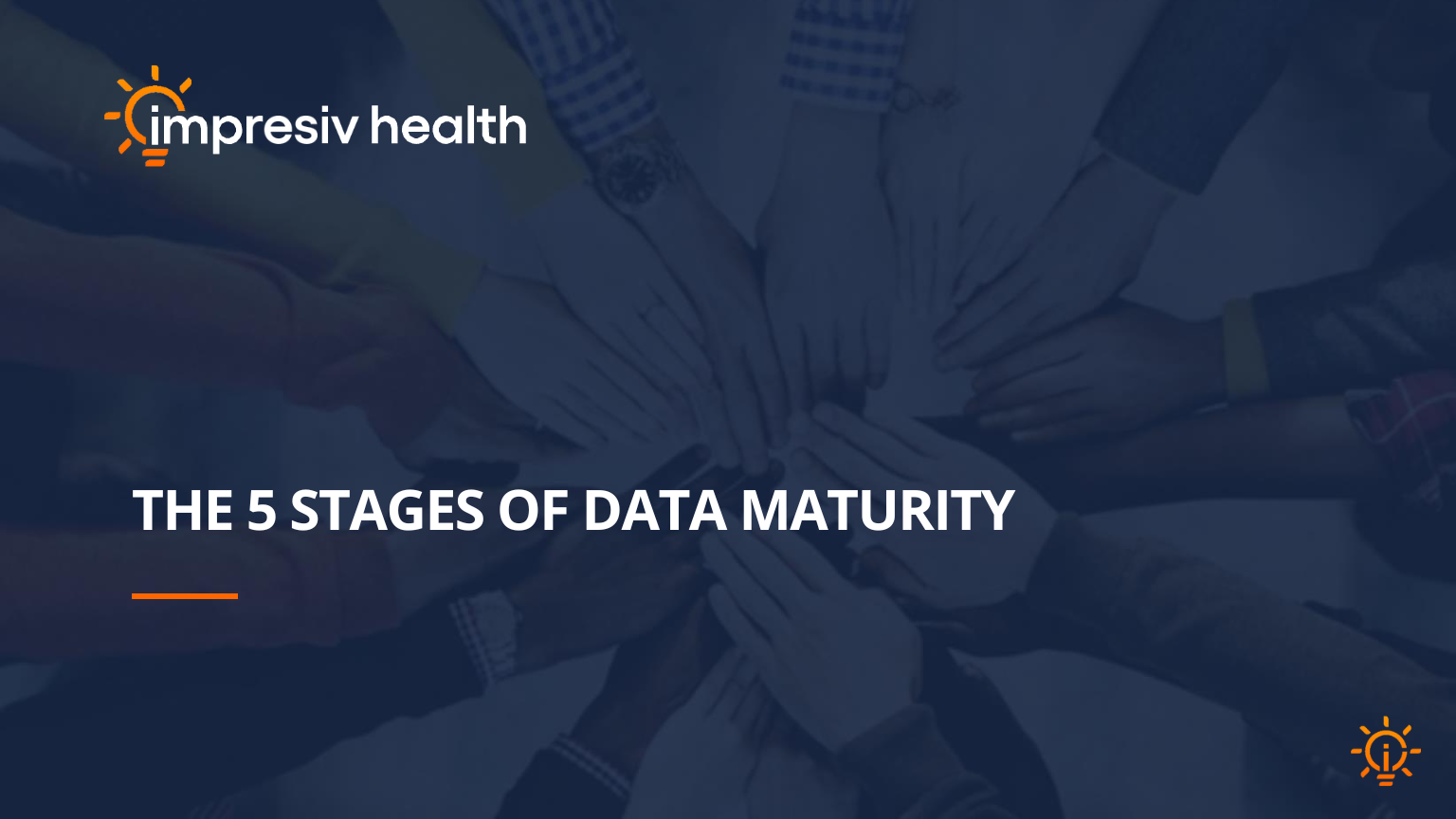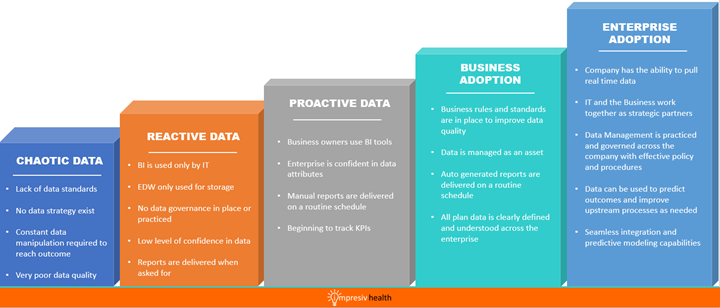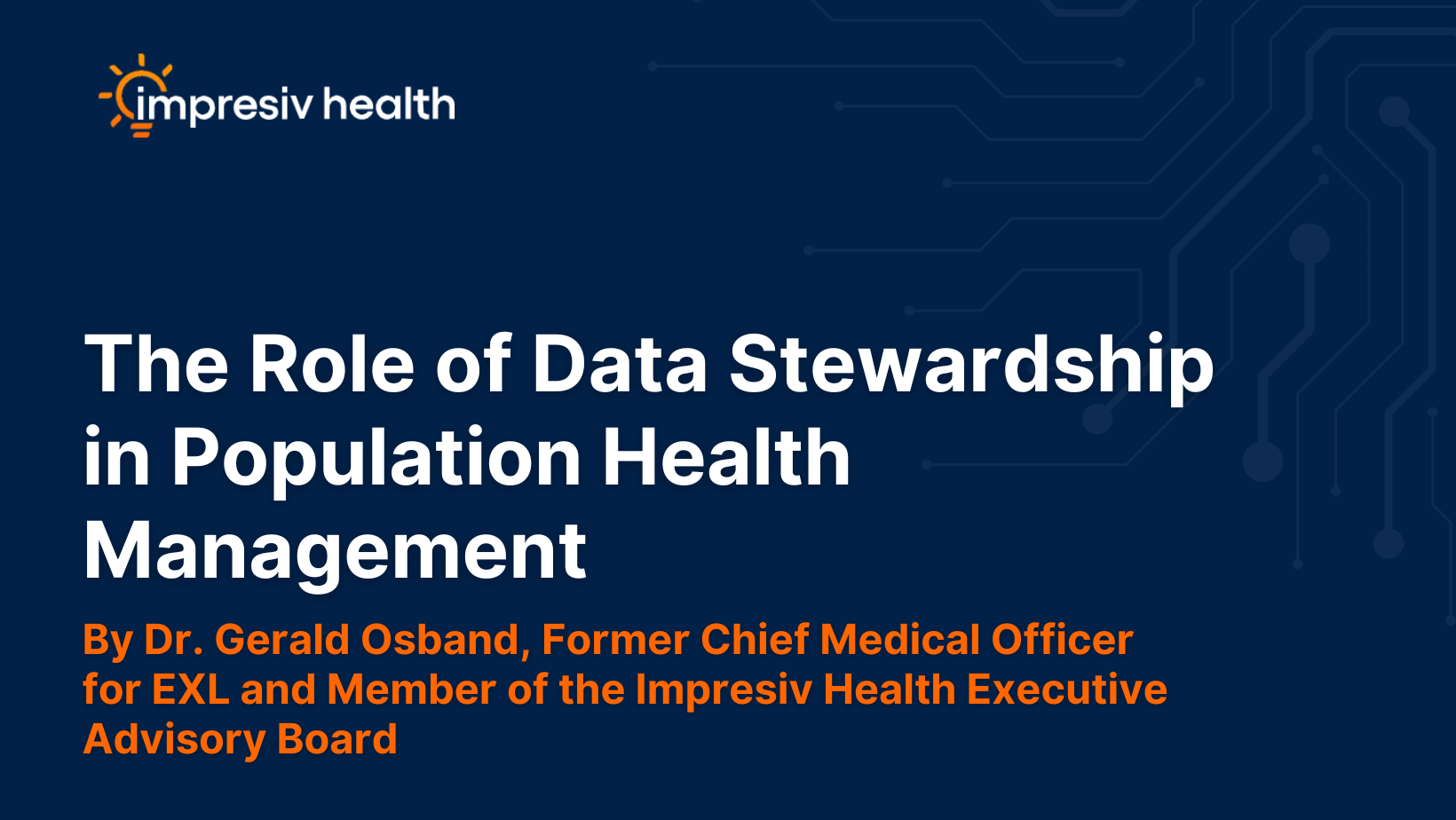(4 Minute Read)
Data flows through an organization daily, and the quality of enterprise data is more important now than ever before. To understand how it originates, how it is used, where it is used to derive new data, or to derive inferences, is to capitalize on this valuable commodity, to recognize its business value, and to treat it as a valuable business asset. The road towards harnessing your data starts with understanding its maturity level. By ensuring data quality, you will mitigate risks associated with bad data and eliminate data doubts.

Chaotic Data
In the Chaotic Data stage, organizations have no data management plan and lots of data that cannot be used without manual intervention or manipulation. There are no set standards for data and the data available has very poor quality. At this level, the company can’t run metrics, doesn’t fully understand its data, and has no useful, evidence-based insights to help better run its organization. Employees spend lots of time manually compiling non-standardized reports from numerous systems with the vague goal of standardizing reporting. Data trust is low to nonexistent.

Reactive Data
Companies at this stage are inundated with a steady flow of data from both internal and external sources, but few have the tools needed to turn their data into valuable information. In this phase, data quality is still continually questioned. Data continues to be stored in multiple locations with no application integration or data visualization capabilities. BI is used solely by the IT team and reports are created and delivered upon request. Employees waste time looking for information instead of analyzing it, and data is raw and unwieldy. Decisions are made with little to no data consideration with organizations never getting the chance to turn their information into strategic and competitive assets.
 Proactive Data
Proactive Data
In this stage, the organization has begun to track organizational KPIs and is now ready to pilot a data initiative, but it lacks executive sponsorship and the know-how to manipulate or use unstructured data. Reports remain time and labor-intensive as they are still created manually, but they are now delivered on a routine schedule. Business rules and standards are not currently in place to improve data quality, but leadership is now becoming aware of a need for a formalized data governance plan. It’s very common at this stage for the organization to begin requesting insight and innovation beyond the internal IT team’s capabilities or capacity, leading to frustration throughout the organization. Organization leadership begins to use BI tools and are developing more trust in the accuracy of their data.
 Business Adoption
Business Adoption
In the Business Adoption stage organizations begin to use high-quality data assets while applying both context and relevance to their data models. A formalized data governance system has been implemented, and organizational taxonomies and metadata structures are being built to help categorize and explain data in meaningful ways. Auto generated reports are being delivered on a routine schedule now that data is viewed as an important asset. In order to reach this stage, there must be a cultural shift within the organization (starting with leadership) that parallels the occurring technological shift. Companies in stage four can now not only conduct historical or retroactive analysis but are also beginning to use predictive analysis to inform their decision making.
Enterprise adoption should be the ultimate goal for all organizations. At this stage, organizations are using data to make critical business decisions for established key initiatives. The IT and Business teams have begun working together as strategic partners, and executive sponsorship is put in place to eliminate both organizational and data silos. IT has integrated all data sources and apps and has implemented an advanced analytics platform with the ability to pull real time data. Data Management is practiced and governed across the company with effective policy and procedures.
Enterprise adoption ushers in the development of predictive models that augment the historical analysis the organization had engaged in until this point. Data driven organization enables end users with the ability to perform their own analysis on a trusted and supported architecture, allowing the organization to increase the speed and number of iterations in its analytics development with the required compliance, security and scalability of the established data governance program. The challenges for organizations at this point is to remain data-driven while embedding analytics seamlessly into business processes, continually moving up the analytics maturity curve from predictive analytics into prescriptive analytics.
Learn More About the Data Maturity Curve
For a closer look at how Impresiv Health can move you up the maturity curve from Chaotic Data to Enterprise Adoption...
Ready to Start the Journey Towards Data Maturity?
The first step towards a data-driven future is connecting with the Impresive Health team of experts. Learn how the we can help you derive insights from data that drive business growth.
Never Miss Another Impresiv Health Blog
Sign up for our monthly newsletter to get the latest news, blogs, tips, and thought leadership from Impresiv Health.











